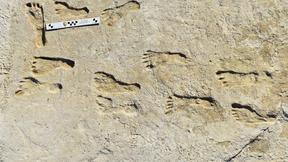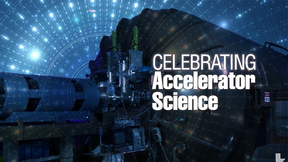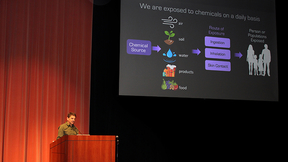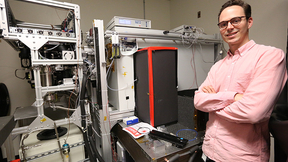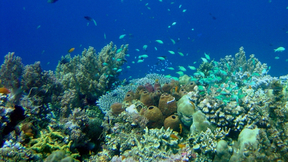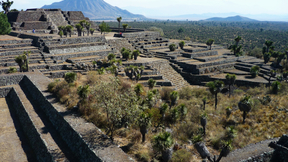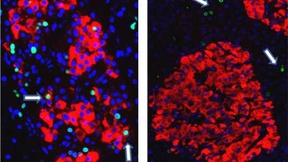Back
New research reaffirms that human footprints found in White Sands National Park, New Mexico, date to the Last Glacial Maximum, placing humans in North America thousands of years earlier than once thought. In September 2021, U.S. Geological Survey researchers and an international team of scientists announced that ancient human footprints discovered in White Sands National…
Carbonate minerals are formed when carbon dioxide reacts with magnesium and calcium-rich rocks. But where does that CO2 come from? If it comes from the atmosphere, this process at sufficient scale may be able to reliably draw down atmospheric greenhouse gas levels, according to new research by Lawrence Livermore National Laboratory (LLNL) scientists. The research appears…
The dangers of coastal erosion are an all-too-familiar reality for the modern residents of California’s iconic mountainous coastal communities. With a new tool, researchers are now bringing historical perspective to the topic of how to manage these disappearing coastlines. Using a model that incorporates measurements of the amount of time coastal cliffs and their remnant…
Around 2 million years ago, climate in Greenland resembled the forecast of a future under global warming: with trees such as poplars and birch and animals like hare, lemmings, mastodons and reindeer. Paleoclimatic records show strong polar amplification with annual temperatures of 11–19 degrees Celsius above current values. The biological communities inhabiting the Arctic…
Scientists at LLNL’s Forensic Science Center and Biosecurity Center have formulated molecule LLNL-02, the first molecule capable of dual protection against nerve agents.
Livermore’s Center for Accelerator Mass Spectrometry celebrates a milestone anniversary with a broad range of research endeavors. Read more about it in this month's issue of Science & Technology Review (S&TR): str.llnl.gov.
Livermore’s Center for Accelerator Mass Spectrometry celebrates a milestone anniversary with a broad range of research endeavors.
Lawrence Livermore National Laboratory’s (LLNL’s) educational outreach program Science on Saturday returned in February for a season of Marvelous Machines. Held annually at the Bankhead Theater in downtown Livermore, the lecture series offers local students and the public a peek into LLNL’s recent research. In a February 10 presentation titled “Biomedical Accelerator Mass…
The bookcase in Alan Hidy’s office is loaded with carefully labeled bags of rocks -- some the size of a fist, others pulverized into dust. The granite in these bags is destined for isotope ratio measurement at Lawrence Livermore National Laboratory's Center for Accelerator Mass Spectrometry (CAMS). "These are from the Sierras," Hidy said, referring to his ongoing study of…
Lawrence Livermore National Laboratory (LLNL) researchers have developed a laser-based tabletop device to measure carbon-14 (radiocarbon). In biological systems, carbon-14 (14C ) can be used as a biochemical tracer to track micro-doses of nutrients, toxins and therapeutics in humans and animals. For example, the 14C can be tacked on to a vitamin. When a human ingests the…
Researchers have found that new measurements of the size, age and composition of organic matter in the Pacific Ocean affects short-term and long-term climate impacts. The findings could have implications for climate in terms of how long organic matter is stored in the ocean before being converted into CO2 and re-entering the atmosphere. Marine organic matter is one of…
Scientists have reconstructed the past climate for the region around Cantona, a large fortified city in highland Mexico, and found the population drastically declined in the past, at least in part because of climate change.The research appears in the online edition of the Proceedings of the National Academy of Sciences for the week of Jan. 26.Lawrence Livermore researcher…
Buoyed by several dramatic advances, Lawrence Livermore National Laboratory scientists think they can tackle biological science in a way that couldn't be done before.Over the past two years, Lab researchers have expedited accelerator mass spectrometer sample preparation and analysis time from days to minutes and moved a complex scientific process requiring accelerator…
When Lawrence Livermore National Laboratory researchers invented the field of biological accelerator mass spectrometry (AMS) in the late 1980s, the process of preparing the samples was time-consuming and cumbersome. Physicists and biomedical researchers used torches, vacuum lines, special chemistries and high degrees of skill to convert biological samples into graphite…
Using bomb-pulse dating, Livermore researchers help solve cold cases and clear up mysteries about the human brain and eye.
From developing the first accelerator mass spectrometer for use in the biology field to tracking radionuclides from the Dai-ichi Nuclear Power Plant disaster, the Laboratory's Center for Accelerator Mass Spectrometry (CAMS) has spent 25 years in the spotlight of not only dating ancient artifacts but solving global challenges.CAMS is celebrating its 25th anniversary this…
Research conducted at the Center for Accelerator Mass Spectrometry (CAMS) spans the universe, the depths of time and everything in between. Although not all elements and isotopes are able to be utilized by AMS, CAMS' researchers make the most of what nuclear physics has given them.Here is a sampling of some of the many ways CAMS is utilized, along with the important…
In a study published in a recent edition of Nano Letters , the Laboratory's Mike Malfatti, Heather Palko, Ed Kuhn and Ken Turteltaub report on accelerator mass spectrometry measurements used to investigate the relationship between administered dose, pharmacokinetics (PK), and long-term biodistribution of carbon 14-labeled silica nanopartocles in vivo .The increasing use of…
LIVERMORE, Calif. -- In an effort to identify the thousands of John/Jane Doe cold cases in the United States, a Lawrence Livermore National Laboratory researcher and a team of international collaborators have found a multidisciplinary approach to identifying the remains of missing persons. Using "bomb pulse" radiocarbon analysis developed at Lawrence Livermore, combined…
Beta cells, which make insulin in the human body, do not replicate after the age of 30, indicating that clinicians may be closer to better treating diabetes. Type 1 diabetes is caused by a loss of beta cells by auto-immunity while type 2 is due to a relative insufficiency of beta cells. Whether beta cells replicate after birth has remained an open issue, and is critically…

